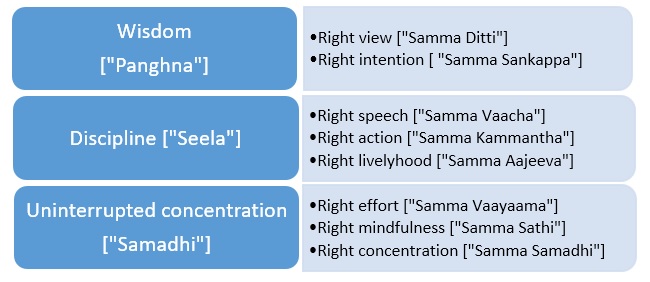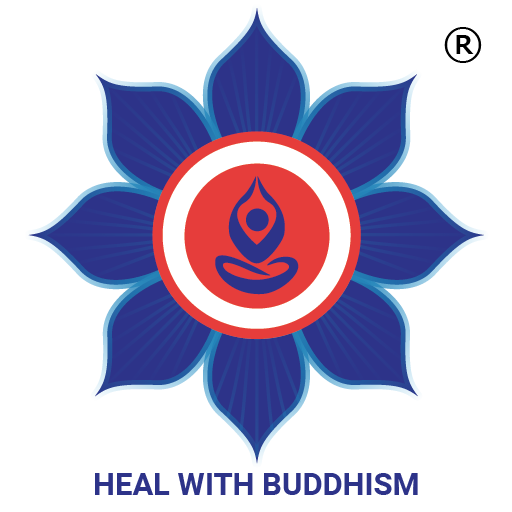Buddhist meditation or mindfulness has self-declared its’ importance under the current global circumstances with a growing need of resilience and adaptability towards changes in the post COVID-19 world. But, you are most likely to agree that learning to practice this ancient wisdom remains confusing and challenging due to decades of misconceptions around it.
Mindfulness taught in Buddhism is an art of living that guides us to live in the moment with wisdom, which teaches us to be resilient under the eight worldly conditions known as “ashta loka dhamma”: Four pairs of opposite conditions, considered as the inevitable experiences by any universal being including our-selves.
“Sukha” [pleasure] and “Dukha” [pain]
“Labho” [gain] and “Alabho” [loss]
“Yasa” [fame] and “Ayasa” [disgrace]
“Prasansha” [praise] and “Ninda” [blame]
It is a lifestyle that advocates following “do no harm” principles:
- Performing good deeds [actions that lead to good outcomes], while abstaining from evil [actions that lead to bad outcomes] with an intention to purify our minds through mindfulness.
“Sabba papassa akranan
Refrain from evil deeds
Kusalassa upa sampada
Cultivate the deeds with good merit
Sachiththa pariyo dapanam
to purify one’s mind
Ethan buddhanu sasanan”
Is the teachings of all Buddhas
Dhammapada verse 183
Siddhartha Gautham Buddha [5-4th Century BCE
- Taking our own-self as an example when performing any actions impacting others.
“Aththanam upamam kathva”
Dhammapada verses 129-130
As I mentioned in my previous blog [Introduction to Mindfulness: The Buddhist art of living], the best way to practice Buddhist mindfulness is to follow the eightfold middle path that guides us towards a lifestyle, which intent to improve personal and social wellbeing through “Seela”, “Samadhi” and “Panna”.

Among all the three, “Panna” [wisdom] is considered to be the most important quality of human mind, because it is what allows us to overcome ignorance. It is described as the most important asset of an individual, either we are born with or required to develop through “Samma Ditti” [the right view] & “Samma Sankappa” [the right intention].
What is “Samma Ditti” [the right view or the right perception]?
It is an individuals’ understanding about the world as a place that exists under the cause and effect phenomena governed by five interdependence laws; a place we re-live the cycle of birth, aging, sickness and death as a result of our own actions; a place of suffering due to its’ continuously changing and uncontrollable nature; a place where no one could escape the “ashta loka dharma”.
There is a perception that Buddhism as a teaching supports pessimism. But instead what it teaches us to be is realistic. For an example: what it teaches us to become, is the person who could see the glass being half full as well as half empty at the same time. Because, it is our misperception that makes us expect controllable and permanent pleasure rather than unpredictable and uncontrollable reality which brings us sorrow, dis-satisfaction or disappointment.
What is “Samma Sankappa” [the right intentions or motivation]?
You must be familiar with the saying “it is the thought that counts”. Most interestingly, it is a saying that aligns with the Buddhist teachings of “Samma Sankappa” [the right intention]. Theravada Buddhism teaches that our intentions are the most important component of our actions, which makes them selfless or self-oriented. In reality, most of our actions are guided around self-orientation unless ones’ mind has reached the selfless state of “Nirvana” [the enlightenment]. However, the mindful training around the following concepts of “Samma Sankappa” [the right intention] is there to guide us towards a less self-oriented lifestyle that would not only bring tranquility to ourselves but also peace and harmony to others around us.
“Nekkhamma sankalpana” [letting go of the lustful ideas associated with domestic life]:
This is a concept mostly misunderstood as letting go of the domestic life for an ascetic life. Though the Lord Buddha clearly expressed the importance of letting go of the domestic life in an exchange of an ascetic life for the sole purpose of attaining Nirvana, he never discouraged the ones who couldn’t do so. Instead he encouraged his followers to practice generosity and modest living as a way of practicing the concept of letting go.
“Avyapada sankalpana”
The thought of harvesting “Maithree” [loving kindness] with an intention to remove “Vyapada” [hatred].
“Avihinsa sankalpana” [concept of non-violence]
The thought of harvesting “Avihinsa” [compassionate empathy] towards others who are less fortunate or vulnerable [children, elderly, women, disable, poor or less educated and animals] with an intention to protect them against violence and discrimination through a safe and fair society.
I hope, now you understand the importance of the first two steps of the eightfold middle path, which are considered to be the foundations of wisdom. It is said, no one would be able to achieve the full potential of this unique meditation without wisdom, because it is what guides us towards an autonomous moral conduct [“Seela”], which include “Samma Vacha” [the right verbal conduct], “Samma Kammantha” [the right physical conduct] and “Samma Aajeeva” [the right livelihood]. As I mentioned in one of my previous blogs, “Gihi-Seela” or the moral conduct for lay-men and women taught in Buddhism is not a strict rule but a guidance towards a safe and fair society with healthy and happy individuals. It is a teaching that respects our autonomy as an intelligent human being. Most importantly it is a life style that can be practiced by any human being regardless of their age, gender and even religious or cultural background.

